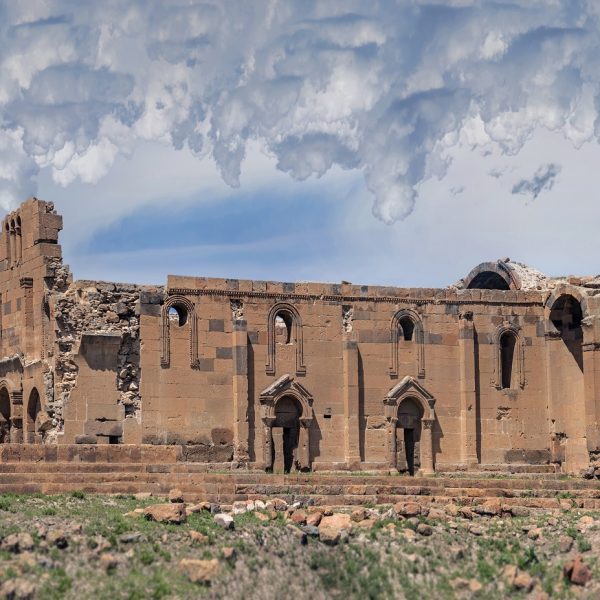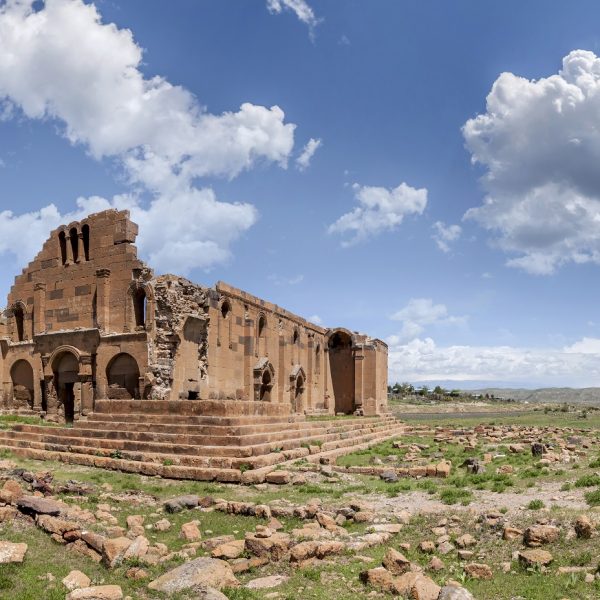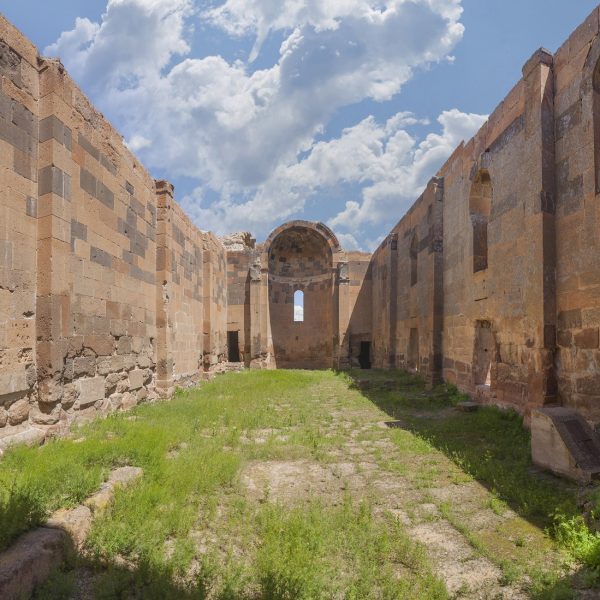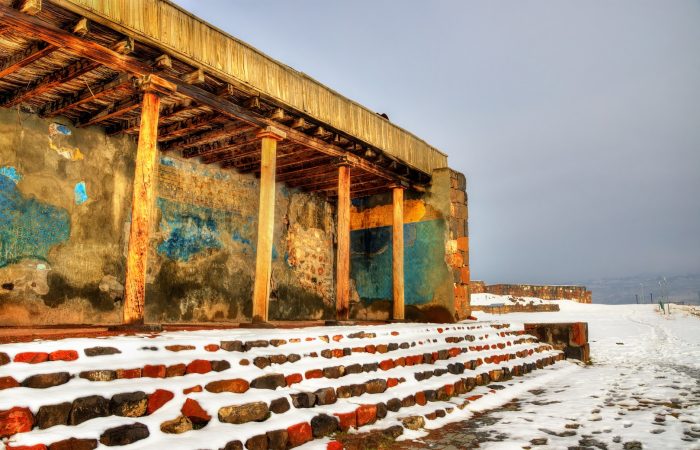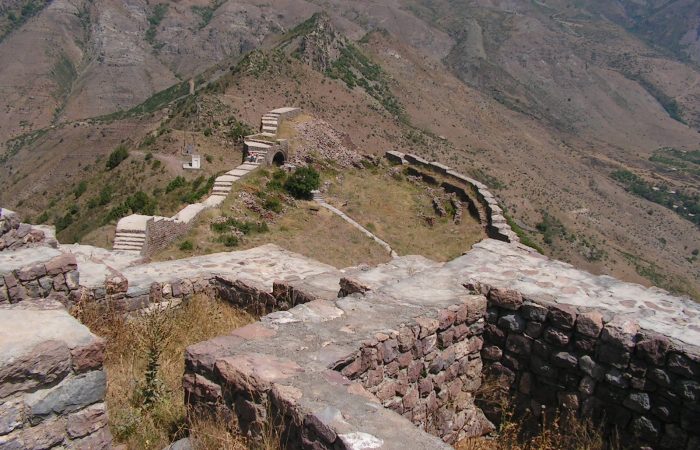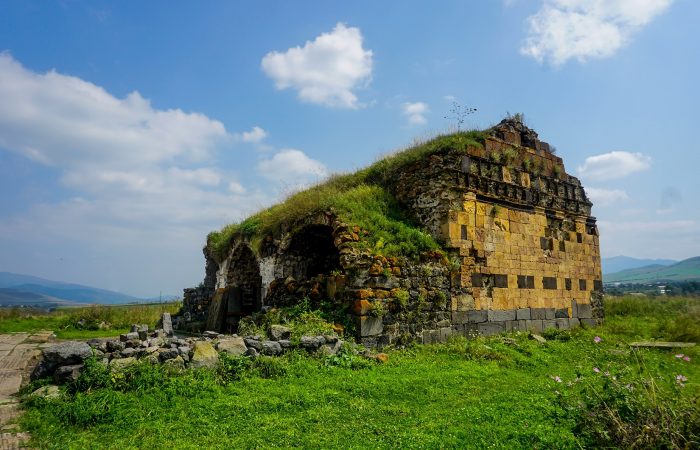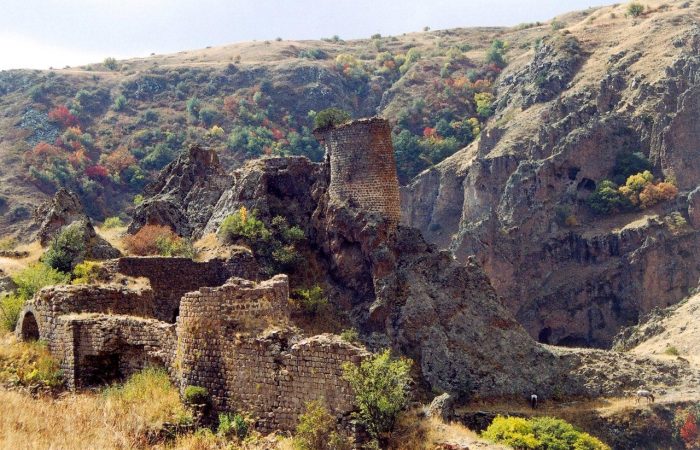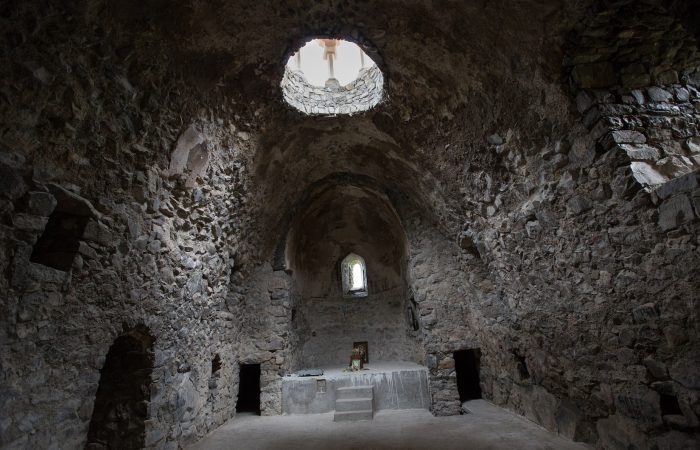Yereruyk Basilica: General and Location
The Church of Yereruyk dates to the 4th-5th centuries; that is to the early period of Christianity. Interestingly, there is no any textual reference regarding the church and the conclusion concerning the date was drawn only based on the building’s type and style.
The church is located in the rural community of Anipemza, on the left bank of River Akhuryan in the province of Shirak. Dedicated to Saint John the Baptist who was most loved by Armenians the church is considered one of the oldest churches of Armenia.
Yereruyk Basilica: Etymology
The naming of the church might in some sense sound strange and unfamiliar even to most of Armenians, who might not immediately get what it means. It is believed that at a distance the columns of the church created an illusion as if the church was swaying. The root of the church’s name is “ereral” (երերալ), which means “to sway” in English.
There is another explanation referring to matagh (a lamb or rooster sacrifice to God). It is said that the animal lungs, kidneys and other belly fat were usually put on a stray and swayed at the altar.
The first option, however, is more probable and reliable.
Yereruyk Basilica: Construction, Architecture
Yereruyk Basilica was built on a stylobate (stepped platform) with six steps. Because of the large steps the church is thought to be built upon the remains of a pagan temple. There is no historical data supporting or rejecting this assumption.
It should be said that there is no any clear idea of how the original church looked like. An answer to this question might be found if excavations and proper on-site studies were conducted but it’s, in some sense, impossible as the church is located in a very sensitive military zone.
With its layout the church is similar to the Syrian basilicas in Turmanin (5th century) and Rusafa (7th century). Yereruyk includes a nave and two aisles. On the northern and southern walls there are three pairs of pilasters, while on the eastern and western walls only two pairs. The interior is believed to be divided into four bays. As to the roof, it’s still unclear if it was wooden or vaulted.
The church’s southern wall includes two portals and the western wall only one. On the northern and southern parts there were porticos with a semi-circular apse on the eastern end.
Out of the church windows one is especially important. It’s a mullioned window based on which it is concluded that the church’s nave was taller than the side aisles. If it really was so, then the church belongs to the Hellenistic type basilicas. It means the church possibly came with a clerestory and wooden frame over the nave. But there is no other evidence hinting at or proving the existence of the clerestory. At the same time, it has to be noted that Armenian basilicas usually featured the Oriental type and accordingly, came with one roof on the vaulted nave and the side aisles. The nave and the aisles were usually of almost the same height. With all this said, it should be added that up to this day it can’t be said for sure if the basilica belongs to the Oriental type or the Hellenistic, but one thing is certain – it is kind of a transitional monument between the two types.
Yereruyk Basilica: Excavations, Reconstruction
In 1908 excavations headed by Marr were held in the church. Already then the church stood with its roof collapsed and only the perimetrical walls remaining. The church was twice reconstructed. The reconstructions took place in 1928 and 1948 and were performed by the Committee for the Preservation of Monuments.
During the 1928 restoration works the stress was more put on the exterior and interior steps, while in 1948 the lower elevation of the southern façade was refaced and the 1038 inscription on the church’s southern façade was reset. Also, the stylobate was cleared. The 1948 restoration works were headed by Sahinian.
Yereruyk Basilica: Around the Church
In the territory of Yereruyk Basilica various funerals of newborns were found. Based on the excavations held in 2011 it was assumed the funerals were related to the fact the church was dedicated to Saint John the Baptist. In all probability, an impression or idea was formed among people that in the church-yard they could bury those newborns who were not baptized.
Lastly, being the only Armenian monument in its kind Yereruyk Basilica has and will always have a unique place among the basilica churches of early Christian period.

